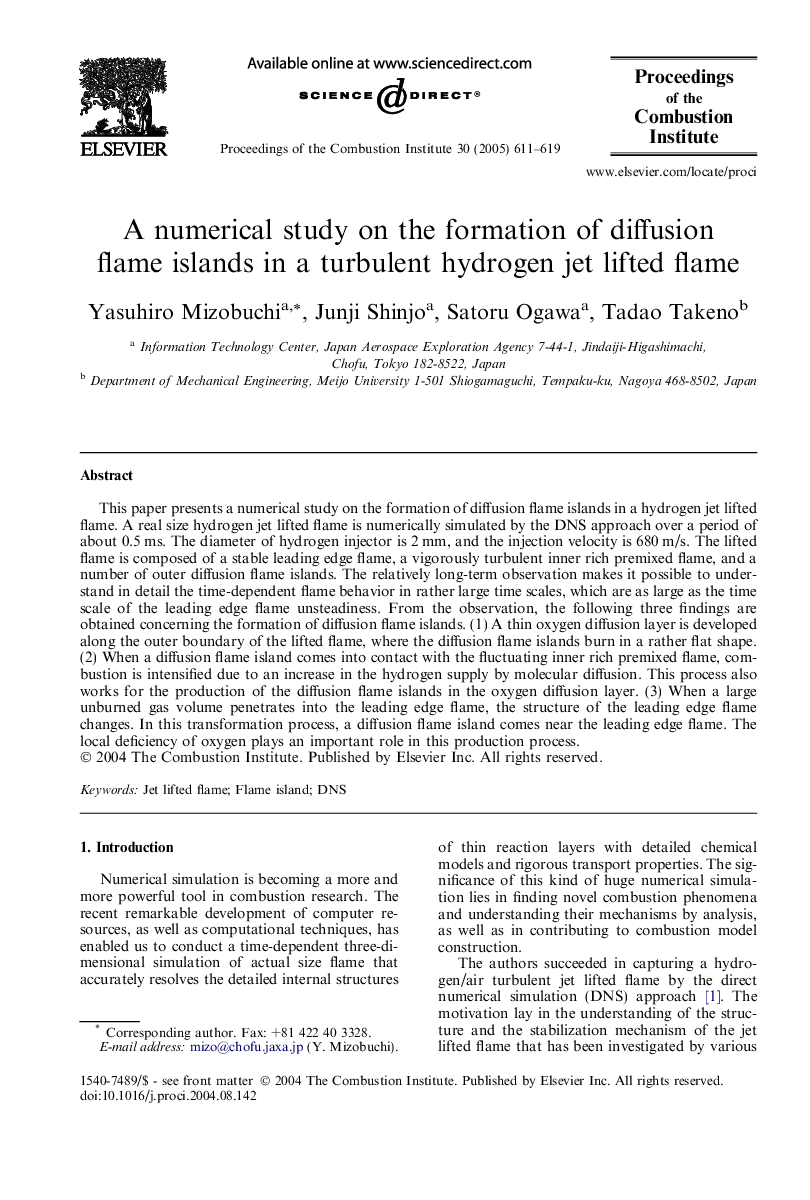| Article ID | Journal | Published Year | Pages | File Type |
|---|---|---|---|---|
| 9637383 | Proceedings of the Combustion Institute | 2005 | 9 Pages |
Abstract
This paper presents a numerical study on the formation of diffusion flame islands in a hydrogen jet lifted flame. A real size hydrogen jet lifted flame is numerically simulated by the DNS approach over a period of about 0.5Â ms. The diameter of hydrogen injector is 2Â mm, and the injection velocity is 680Â m/s. The lifted flame is composed of a stable leading edge flame, a vigorously turbulent inner rich premixed flame, and a number of outer diffusion flame islands. The relatively long-term observation makes it possible to understand in detail the time-dependent flame behavior in rather large time scales, which are as large as the time scale of the leading edge flame unsteadiness. From the observation, the following three findings are obtained concerning the formation of diffusion flame islands. (1) A thin oxygen diffusion layer is developed along the outer boundary of the lifted flame, where the diffusion flame islands burn in a rather flat shape. (2) When a diffusion flame island comes into contact with the fluctuating inner rich premixed flame, combustion is intensified due to an increase in the hydrogen supply by molecular diffusion. This process also works for the production of the diffusion flame islands in the oxygen diffusion layer. (3) When a large unburned gas volume penetrates into the leading edge flame, the structure of the leading edge flame changes. In this transformation process, a diffusion flame island comes near the leading edge flame. The local deficiency of oxygen plays an important role in this production process.
Keywords
Related Topics
Physical Sciences and Engineering
Chemical Engineering
Chemical Engineering (General)
Authors
Yasuhiro Mizobuchi, Junji Shinjo, Satoru Ogawa, Tadao Takeno,
